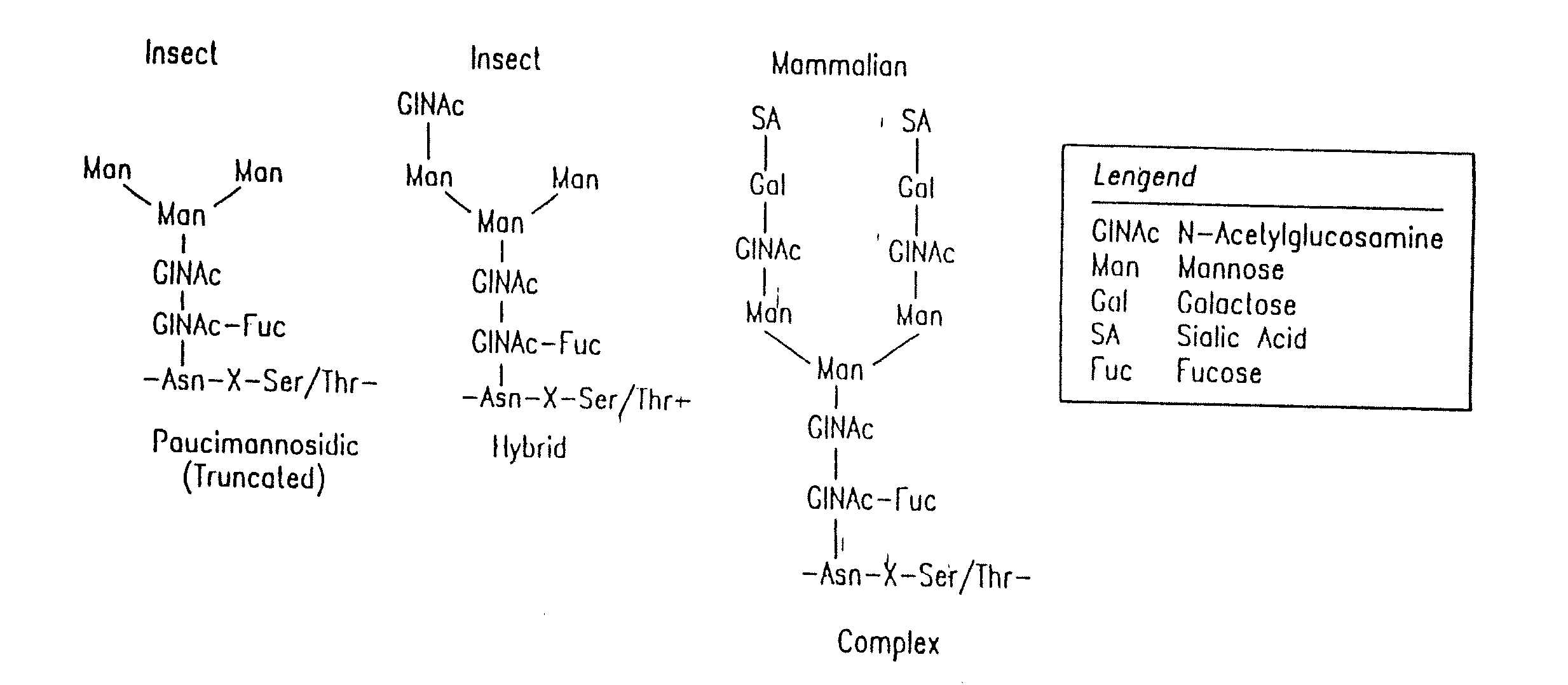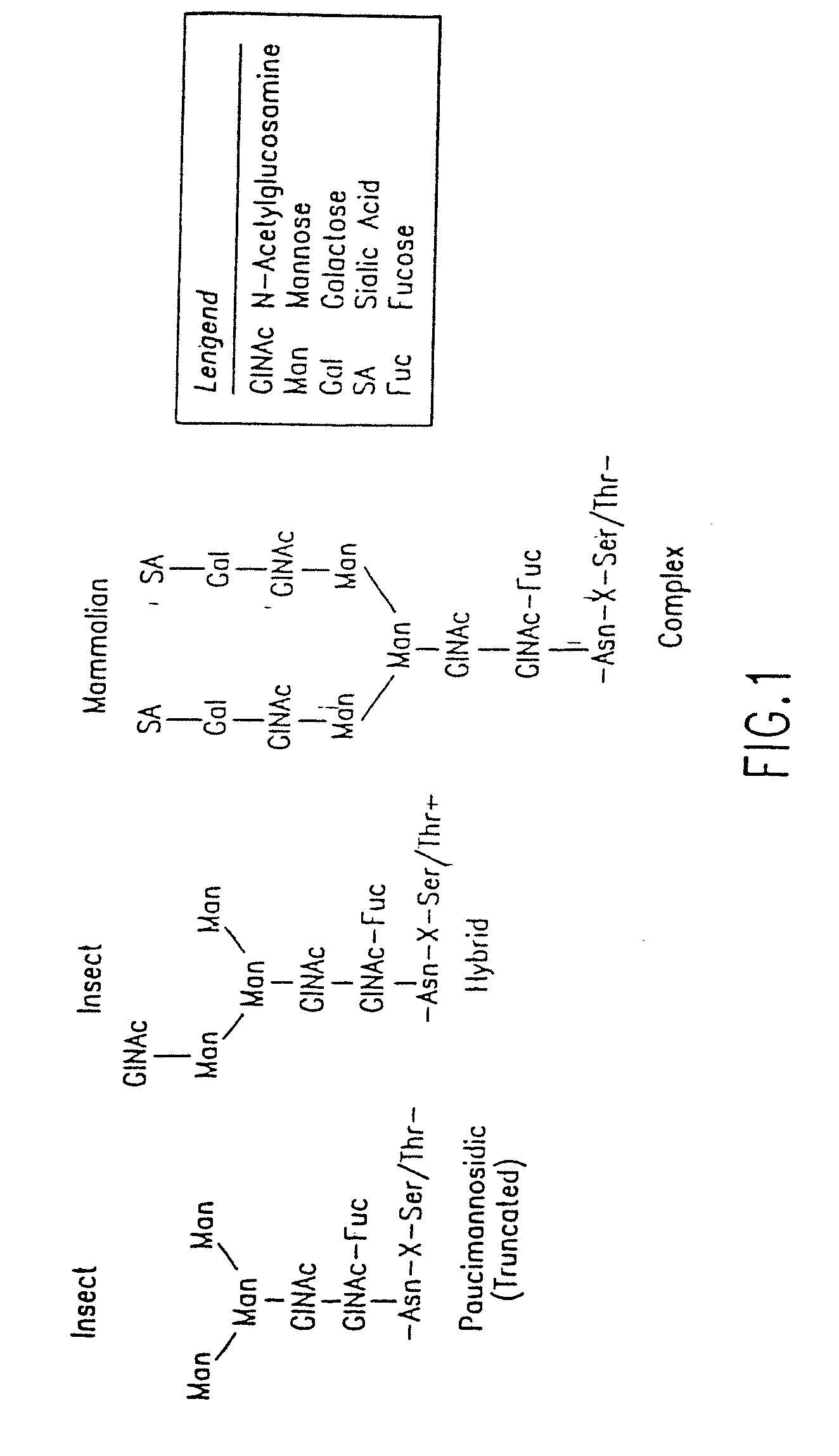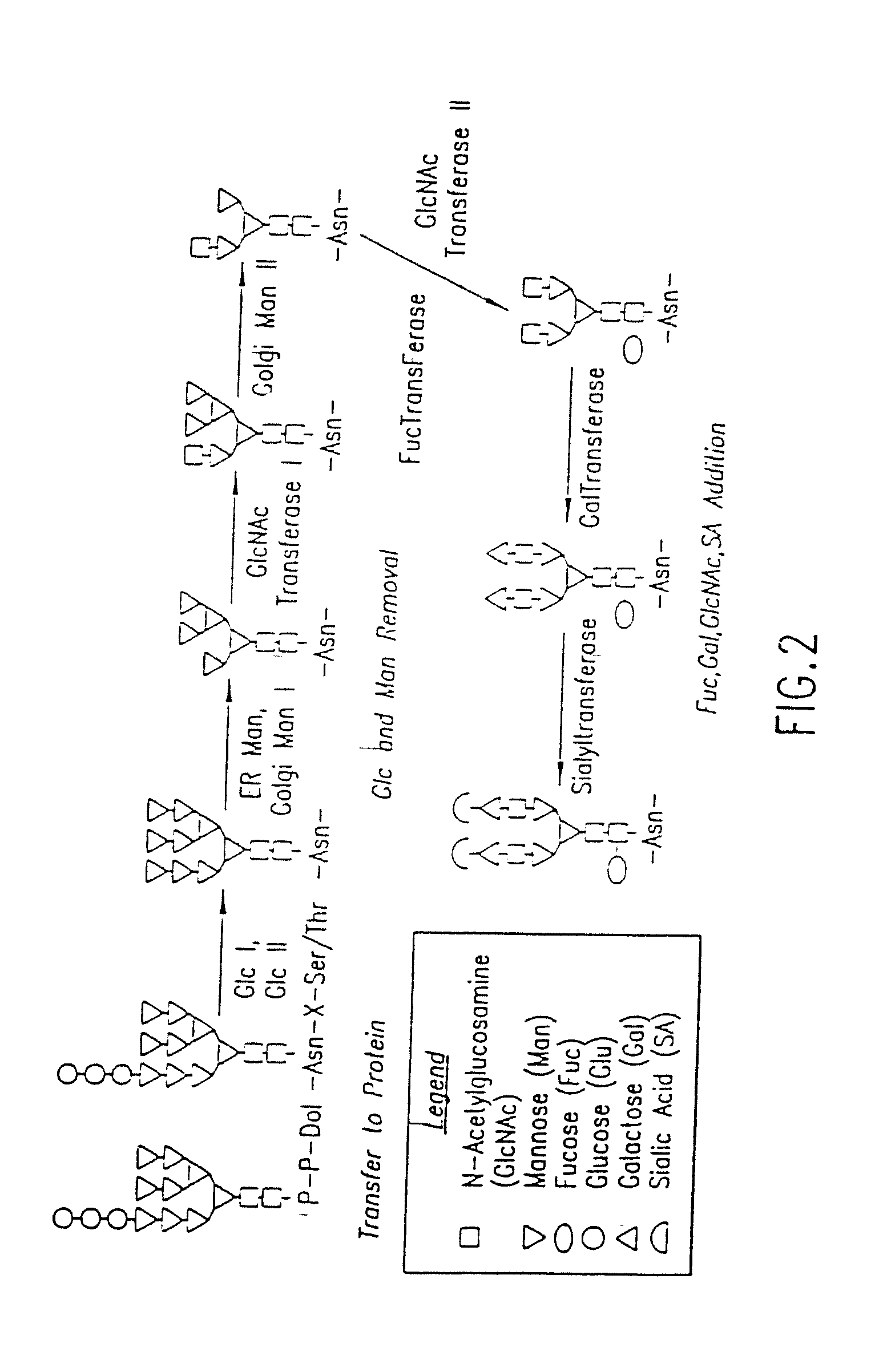Engineering Intracellular Sialylation Pathways
a technology of intracellular sialylation and sialylation pathway, which is applied in the field of engineering intracellular sialylation pathway, insect cells, can solve the problems of limiting the wider application of this expression system, insect cell lines generating complex carbohydrates, and specific and limiting carbohydrate processing, so as to enhance the production of limiting components
- Summary
- Abstract
- Description
- Claims
- Application Information
AI Technical Summary
Problems solved by technology
Method used
Image
Examples
example 1
Evaluation of N-Glycosylation Pathway Enzymes
[0224]The levels of N-linked oligosaccharide processing enzymes are measured using analytical assays to characterize carbohydrate processing in native and recombinant insect cells. These assays are used to compare the N-glycan processing capacity of different cell lines and to evaluate changes in processing and metabolite levels following metabolic engineering modifications.
[0225]High Performance Anion Exchange Chromatography (HPAEC) Assay for Galactose Transferase
[0226]HPAEC is used in combination with pulsed amperometric detection (HPAEC-PAD) or conductivity to detect metabolite levels in the CMP-SA pathway and to evaluate N-linked oligosaccharide processing enzymes essentially as described by (Lee et al. (1990) Anal. Biochem. 34:953-957, Lee et al. (1996) J. Chromatography A 720:137-149). Shown in FIG. 9 is an example of the use of HPAEC-PAD for measuring Gal T activity by following the lactose formation reaction:
UDP-Gal+Glc GalT Lac+U...
example 2
Enhancing SA Levels by Substrate Addition
[0234]Because the conventional substrates in insect cell media are not efficiently converted to CMP-SA in insect cells as demonstrated by the low levels of CMP-SA, alternative substrates are added to the culture medium. Because sialic acid and CMP-SA are not permeable to cell membranes (Bennetts et al. (1981) J. Cell. Biol. 88:1-15), they are not considered as appropriate substrates. However, other precursors in the CMP-SA pathway are incorporated into cells and considered as substrates for the generation of CMP-SA in insect cells.
[0235]Incorporation and Conversion of N-acetylmannosamine (ManNAc)
[0236]ManNAc has been added to mammalian tissue and cell cultures and enzymatically converted to SA and CMP-SA (Ferwerda et al. (1983) Biochem. J. 216:87-92, Gu et al. (1997) Improvement of the interferon-gamma sialylation in Chinese hamster ovary cell culture by feeding N-acetylmannosamine, Thomas et al. (1985) Biochim. Biophys. Acta 846:37-43). Cons...
example 3
Purification and Cloning of CMP-SA Synthetase
[0240]A bioinformatics search of the cDNA libraries of HGS revealed a novel human CMP-sialic acid synthetase (CMP-SA synthetase, or CMP-SAS) gene based on its homology with the E. coli DNA sequence. The bacterial enzyme includes a nucleotide binding site for CTP. This binding site contains a number of amino acids that are conserved among all known bacterial CMP-SAS enzymes (See Stoughton et al., Biochem J. 15:397-402 (1999). The identity of the human cDNA as a CMP-SA synthetase gene was confirmed by the presence of significant homology within this binding motif:
bacterial sequence:IIAIIPARSGSKGLidentity / homology+A + I AR GSKG+human cDNA:LAALILARGGSKGI
[0241]This human homologue commercially, publicly, or otherwise available for the purposes of this invention is cloned and expressed in insect cells. The nucleotide and amino acid sequences of human CMP SA synthetase are shown in FIGS. 29 and 30 respectively. The characterization of CMP-SA syn...
PUM
 Login to View More
Login to View More Abstract
Description
Claims
Application Information
 Login to View More
Login to View More - R&D
- Intellectual Property
- Life Sciences
- Materials
- Tech Scout
- Unparalleled Data Quality
- Higher Quality Content
- 60% Fewer Hallucinations
Browse by: Latest US Patents, China's latest patents, Technical Efficacy Thesaurus, Application Domain, Technology Topic, Popular Technical Reports.
© 2025 PatSnap. All rights reserved.Legal|Privacy policy|Modern Slavery Act Transparency Statement|Sitemap|About US| Contact US: help@patsnap.com



